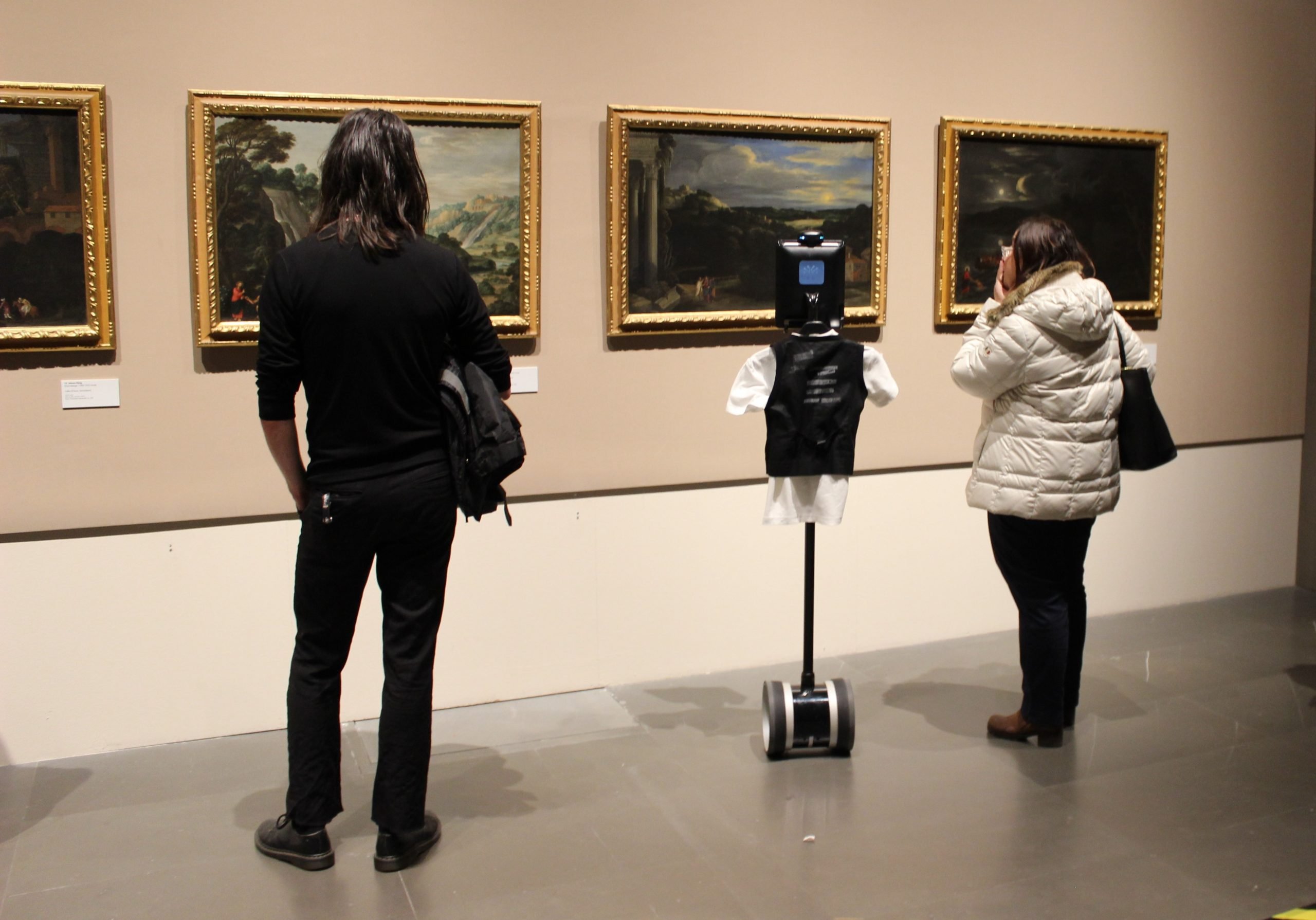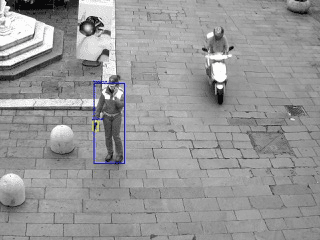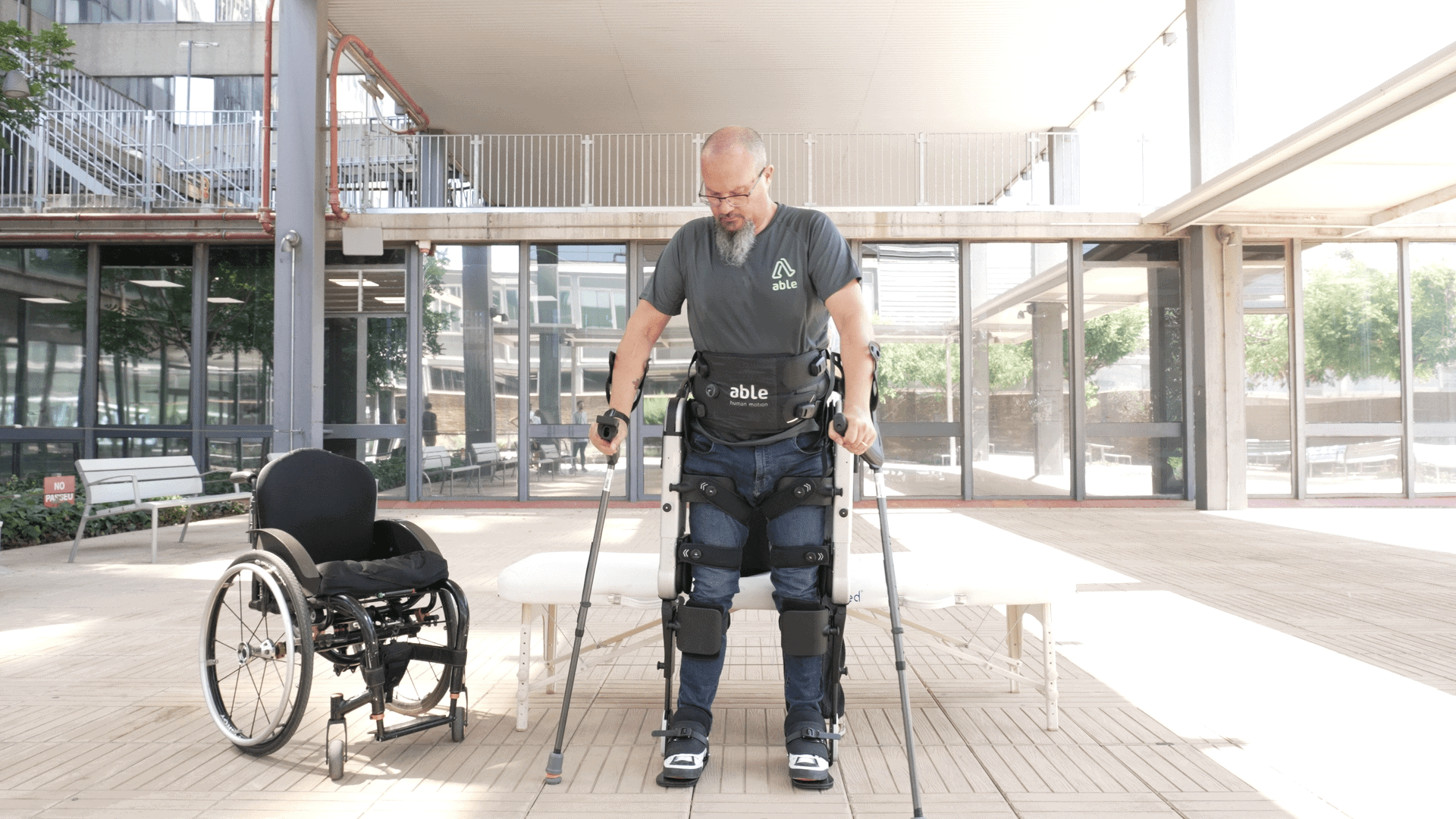
About Able Human Motion
- Founders: Alfons Carnicero, Alex Garcia, and Josep Maria Font
- Founded in: 2018
- Employees: 18
- Money raised: €4.6 million
- Ultimate goal: Democratizing exoskeletons technology.
After Alfons Carnicero’s father suffered a stroke, his personal and professional life had a turning point. “Since then, I got familiar with the rehabilitation practices, noticing how these weren’t good enough. That’s when I decided to shift the focus of my career,” he says. Being an industrial engineer by training, he enrolled in a biomedical engineering master, meeting the two co-founders of ABLE Human Motion – Alex Garcia and Josep Maria Font.
The Spanish startup developed an exoskeleton that enables mobility for physically impaired people. Cheaper and lighter than other options available on the market, the device adapts to the user and the different recovery stages. Only a few of these devices are available in hospitals – and patients use them for a limited time. Carnicero spoke about his company and its technology in this installment of the Start-up of the Day series.
What kind of therapy do post-stroke patients receive?
“Manual therapy is the current standard of care, as therapists help patients move their limbs. It is a low-intensity exercise with few repetitions, not speeding up the neurorehabilitation process. Moreover, it comes at a high cost because healthcare institutions only cover the initial part of the recovery that patients continue in private medical centers.”
How does your exoskeleton work?
“The exoskeleton has four electric motors – two on the hips and two on the knees – to replace muscles. An array of inertial sensors detects the user’s intention to perform a movement. These sensing units – no different from those embedded in smartphones – identify accelerations. Once a movement is detected, they order the motors to extend joints to take a step. This process happens in real-time, thanks to algorithms that adapt to every user.
Since it’s designed for rehabilitation, therapists can maximize limbs’ movement. For instance, if the patient’s condition has improved, robots can be adjusted to apply less power, thus optimizing the recovery process. Doctors can fine-tune the device’s sensibility, setting it high when the user’s ability to move is lower. All setups can be edited via a mobile app the therapist can use.
Patient’s data is stored in a cloud, so setting the exoskeleton up for a specific person is easier, as it remembers the previously used settings and performances.”
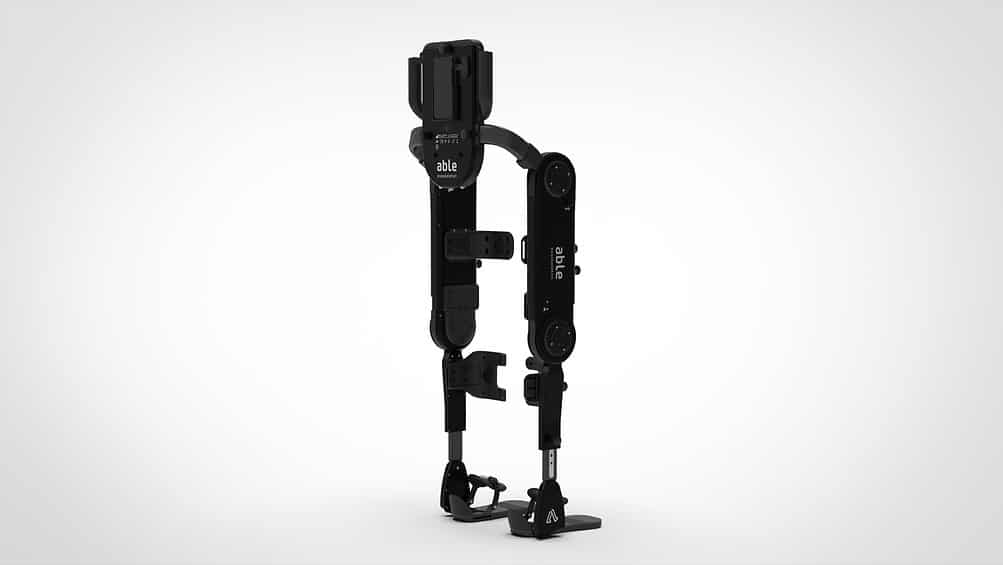
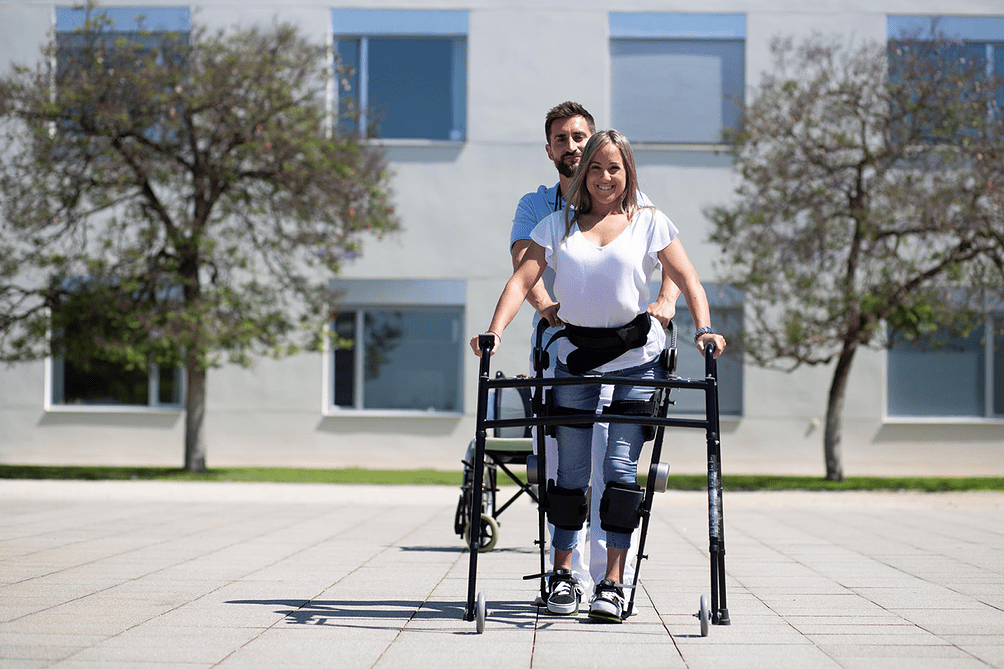
How does a therapy session work?
“The patient arrives at the session in a wheelchair, with the exoskeleton placed on a nearby chair. Before the patient comes, the therapist sets the device’s size – similar to a pair of trousers – to fit the user. The device has a feature that lifts up the leg to provide more space for the patient to fit in the skeleton. Then, thanks to specially designed textile straps, the user can autonomously attach the exoskeleton to the body using one hand only, as the other is used for holding the torso up. It takes about seven minutes to wear and to take the device off.
When ready, the patient can push a button to start the stand-up motion activity, with the knees’ motors that unleash power to push one up. As the user is up, the session – taking up to an hour and a half – can start.”
How does the rehabilitation process evolve?
“We designed the exoskeleton to adapt to the patient’s progress and to different kinds of movement impairment. When used for the first time, the therapist makes the patient walk by pushing buttons on the back of the device. As one gets used to the exoskeleton, one controls it and decides when and how to take every step.”
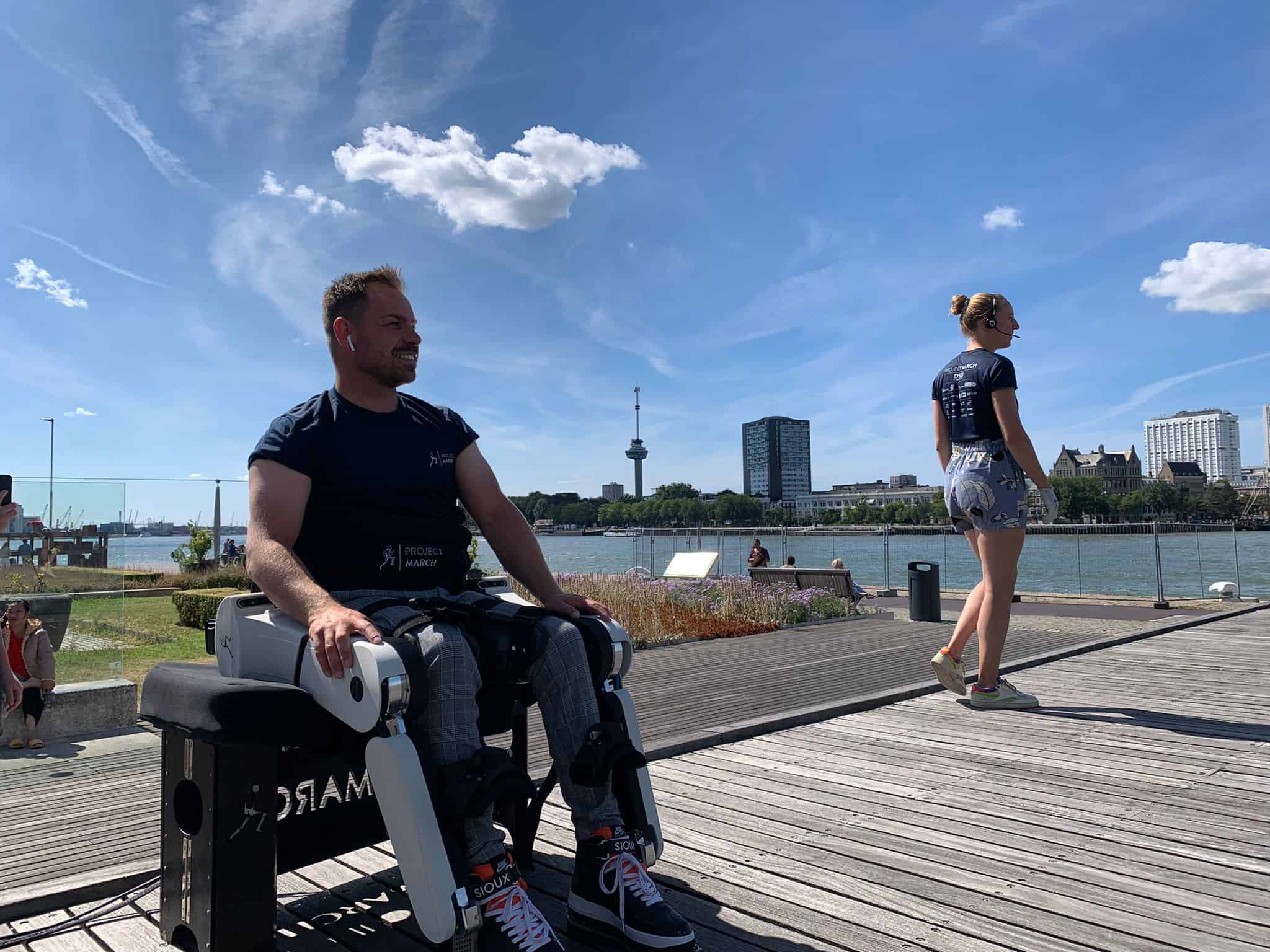
Who can use your device?
“At the moment, we are certifying the device for people who suffered a spinal cord injury below the fifth cervical vertebra. If the patient still controls the triceps, one can use the exoskeleton with a walker. Besides this use case, we are working to allow people who suffered a stroke or are affected by multiple sclerosis to use it.”
How did you manage to bring costs down while creating a high-quality device?
“Our goal has always been to cut costs without sacrificing functionality. Analyzing the existing technologies, we found out that, for instance, electric motors were one of the most expensive components. Therefore, we redesigned them as well as other components. Furthermore, we eliminated all non-strictly necessary features of an exoskeleton, simplifying the technology.”

How much does one of your exoskeletons cost?
“It comes for €60,000, half the price of the main market competitor, which costs €130,000.”
What’s next for ABLE?
“We aim at getting the conformity certification as a medical device by the end of the year, entering the market immediately after. We also target finishing a four million euros funding round by the end of 2023, which would indeed help us commercialize the exoskeleton to hospitals in Europe. By 2025, our ambition is to release a simplified version of the device for home use.”




